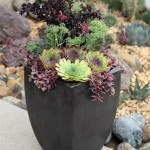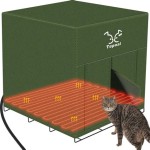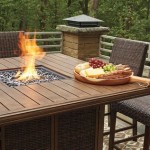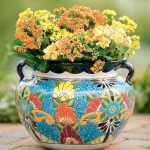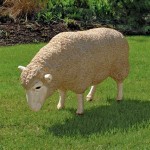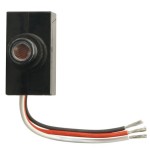Outdoor Brick Wood Burning Fireplace: A Comprehensive Guide
An outdoor brick wood-burning fireplace represents more than just a heat source; it embodies a gathering place, a focal point for outdoor living, and an architectural statement. The construction and design of an outdoor brick fireplace require careful consideration of aesthetics, functionality, safety, and local building codes. This article will delve into the various aspects of planning, building, and maintaining an outdoor brick wood-burning fireplace.
The appeal of a brick fireplace in an outdoor setting stems from its inherent rustic charm and enduring durability. Brick, as a building material, provides a sense of permanence and complements various landscaping styles. The crackling fire and the aroma of burning wood create a welcoming atmosphere, encouraging relaxation and social interaction. Furthermore, a well-designed outdoor fireplace can extend the usability of outdoor spaces into cooler months, making it a valuable addition to any property.
Planning and Design Considerations
Prior to embarking on the construction of an outdoor brick wood-burning fireplace, diligent planning is essential. The design phase should incorporate several crucial factors, including location, size, style, and building codes. These considerations will directly impact the fireplace's functionality, aesthetics, and compliance with local regulations.
The location of the fireplace plays a significant role in its overall impact. Proximity to the house, prevailing winds, and the orientation relative to neighboring properties are all important. The fireplace should be situated in a location that allows for easy access, comfortable seating arrangements, and minimal disruption to surrounding vegetation. Furthermore, it is imperative to ensure that the location adheres to any setback requirements outlined in local building codes.
The size of the fireplace should be proportionate to the overall size of the outdoor space. A fireplace that is too large can overwhelm the area, while one that is too small may not provide adequate heat or visual impact. Consider the intended use of the fireplace when determining its size. A fireplace intended primarily for ambiance may be smaller than one designed for cooking or providing significant heat.
The style of the fireplace should complement the existing architectural style of the house and the surrounding landscape. Brick offers a wide range of colors, textures, and patterns, allowing for customization to match various design aesthetics. Incorporating elements such as arches, mantels, or decorative inlays can further enhance the visual appeal of the fireplace.
Compliance with local building codes is non-negotiable. Before commencing any construction, it is crucial to obtain the necessary permits and ensure that the design adheres to all applicable regulations. These regulations may address issues such as chimney height, proximity to property lines, and fire safety requirements. Failure to comply with building codes can result in costly fines and delays.
Construction Process and Materials
The construction of an outdoor brick wood-burning fireplace is a labor-intensive process that requires skilled craftsmanship and attention to detail. The foundation, firebox, chimney, and various other components must be carefully constructed to ensure structural integrity and optimal performance. Selecting the appropriate materials is equally important for longevity and safety.
The foundation serves as the bedrock of the fireplace and must be capable of supporting the weight of the entire structure. A concrete slab is typically used as the foundation, and it should be properly reinforced to prevent cracking or settling. The dimensions of the foundation should extend beyond the footprint of the fireplace to provide adequate support.
The firebox is the heart of the fireplace, where the fire is contained. It must be constructed using fire-resistant materials that can withstand high temperatures. Firebricks, specifically designed for this purpose, are typically used to line the firebox. The firebox should be properly insulated to prevent heat transfer to surrounding materials.
The chimney is responsible for drawing smoke and combustion gases away from the firebox and releasing them into the atmosphere. The chimney must be of sufficient height to ensure proper draft and prevent smoke from blowing back into the surrounding area. It should be constructed using brick or other non-combustible materials and lined with a flue liner to protect the masonry from corrosive gases.
Mortar is the binding agent that holds the bricks together. It is crucial to use a mortar specifically formulated for masonry applications, as standard mortar may not be able to withstand the high temperatures and stresses associated with fireplace construction. The mortar joints should be properly filled and tooled to ensure a weather-tight seal.
Other important materials include: firebrick for the firebox lining, a damper to control airflow, and potentially a metal firebox insert for increased efficiency and safety. A lintel, often made of steel or concrete, is used to support the brickwork above the firebox opening.
Safety Considerations and Maintenance
Safety is paramount when dealing with any fire-related appliance. An outdoor brick wood-burning fireplace requires careful attention to safety protocols during both construction and operation. Regular maintenance is also essential to ensure continued safe and efficient operation.
During construction, it is crucial to adhere to all applicable building codes and safety regulations. Ensure that all materials used are fire-resistant and that the fireplace is properly insulated to prevent heat transfer to surrounding structures. A spark arrestor should be installed at the top of the chimney to prevent sparks from escaping and potentially igniting nearby vegetation.
When operating the fireplace, never leave a fire unattended. Keep a close watch on the fire and ensure that it is contained within the firebox. Avoid using accelerants, such as gasoline or lighter fluid, to start the fire. These substances can be extremely dangerous and can lead to uncontrolled fires.
Regular cleaning is essential to prevent the buildup of creosote, a flammable substance that can accumulate in the chimney. Creosote buildup can significantly increase the risk of chimney fires. The chimney should be inspected and cleaned annually by a qualified chimney sweep.
Inspect the fireplace regularly for any signs of damage or deterioration. Cracks in the brickwork, crumbling mortar joints, or a damaged flue liner can all compromise the safety of the fireplace. Address any issues promptly to prevent further damage and ensure continued safe operation.
Proper storage of firewood is crucial for both safety and efficiency. Store firewood in a dry, well-ventilated area away from the house and other combustible materials. This will help to prevent the growth of mold and mildew and reduce the risk of fire.
It's important to remember that even with proper maintenance and safety precautions, a wood-burning fireplace carries inherent risks. Exercise caution and common sense when using the fireplace to ensure the safety of yourself, your family, and your property.
Consider also the impact on air quality. Burning wood releases particulate matter into the air, which can contribute to air pollution. Be mindful of local air quality regulations and avoid burning wood on days when air quality is poor. Where available, consider using alternative fuel sources, such as propane or natural gas, which produce fewer emissions.

Outdoor Fireplace Builder Richmond Va Dreams

30 In Firerock Arched Masonry Outdoor Wood Burning Fireplace No Installation Kit

Majestic Montana 42 Outdoor Wood Fireplace Traditional Brick

Wood Fireplaces Fireplace Kits Free Shipping Patio Outdoor Furnishings

Superior 36 Paneled Outdoor Wood Burning Fireplace Wre3036

Pima Ii Diy Outdoor Fireplace Construction Plan Etsy

Outdoor Fireplace Round Grove Mezzo Fp1600 Patio Furnishings

Majestic Villawood 36 Outdoor Wood Fireplace Odvilla Herringbone

Mezzo Vent Free Fireplace Oven Combo Stone Age Manufacturing

Semplice Outdoor Fireplace Kit Rcp Block Brick

